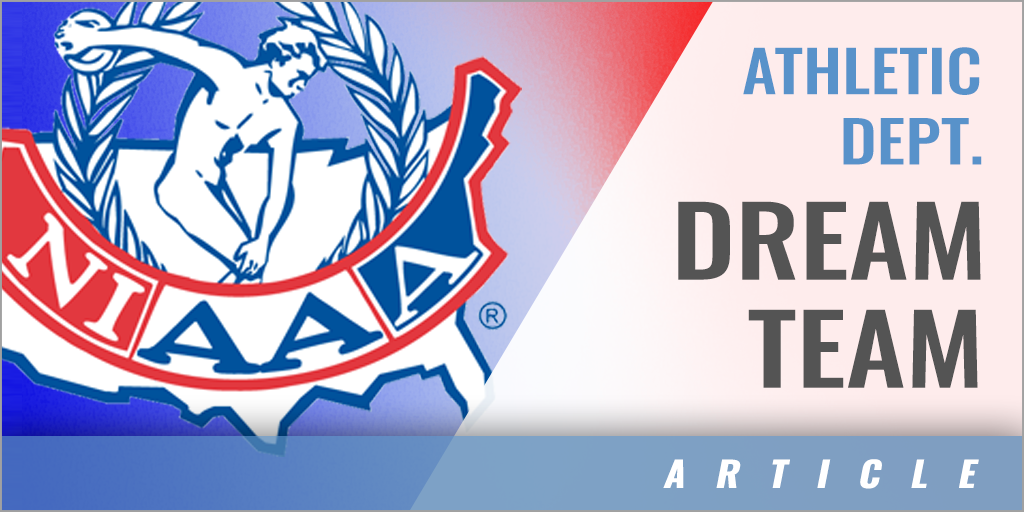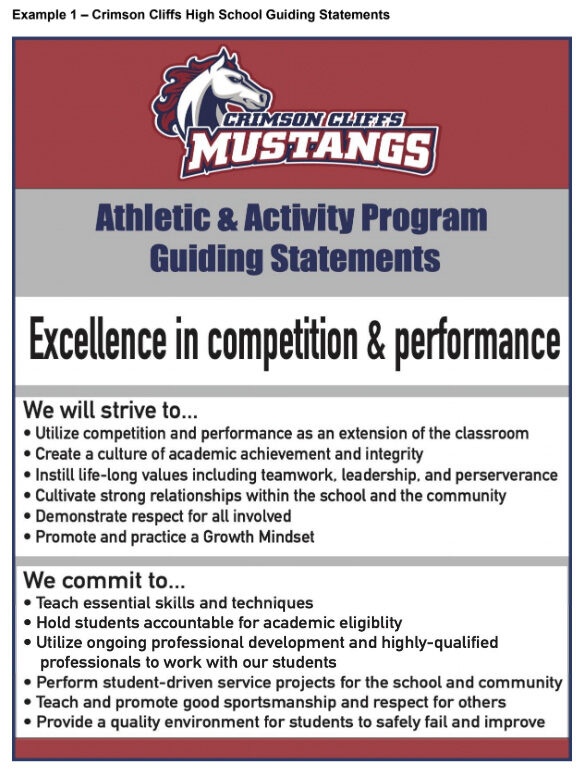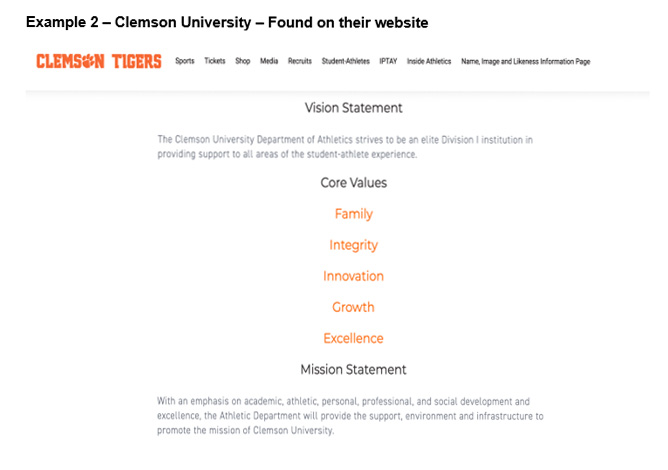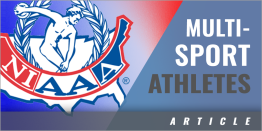|
By: Michael Winslow, CAA - Crimson Cliffs High School, Washington, Utah The 1992 Olympic USA men's basketball team was a historic, phenomenal group of players that were assembled for a single mission - to bring USA Basketball back to prominence on the world stage. It took years of behind-the-scenes work to put together this "Dream Team" as they were called. The 1992 team was the first Olympic basketball team that used professional players. Before then, the USA teams were always composed of college players. The players were deliberately chosen for their skills, and some of them for their star power. The coaching staff, led by head coach Chuck Daly (from the Detroit Pistons) was deliberately selected to support the players. All the planning, scheming, and publicity paid off. The 1992 USA team had a perfect record through the Olympic trials and games. And they didn't just win, they dominated. The closest game was won by 32 points. Magic Johnson, one of the key players on the team said later, "For me, the Dream Team is number one of anything I've done in basketball, because there will never be another team like it. There can't be." As high school athletic/activity directors (ADs) work to improve their programs with the desire to support education-based activities and athletics, some important keys can be drawn from the 1992 Dream Team. From a focused mission, to leveraging the players on your team, to coaching that is focused on the individual - ADs can put together their own "Dream Team" that will provide a worthwhile, memorable, education-based experience for the students involved. Key #1 - Be a mission driven team The first lesson we can learn from the Dream Team is to have a specific purpose or mission behind everything you do. Most schools, as part of the accreditation process, are required to have guiding statements - a mission and vision statement - which is used to direct the work that happens in the school. These statements give clear expectations and common goals to the school community. These guiding statements are developed through discussion and feedback from all the school stakeholders. As an AD you can create guiding statements specific to the athletic/activity program. Bringing your coaches, advisors, trainers, and secretaries together for a discussion about what values, expectations, goals, skills, and dispositions are most important can be a powerful process that creates consistency and buy-in within your program. Putting those clear expectations and values into a mission, vision, commitment statement for your athletic/activity program gives everyone involved a focused document to guide all decisions made in the program (see examples below). Once these guiding statements are developed, take time each year to review them as a department. This will ensure that the values are reflective of what is most important on a continual basis. Kenneth C. Williams - a Solution Tree consultant who works with schools all around the country - uses the phrase "Mission Driven" when discussing the use of guiding statements. The idea being that mission and vision statements shouldn't just be passive ideas that come up once a year - these guiding statements should DRIVE what happens in your program. To create this drive in your program you should get the guiding statements out to the public. Ensure that every person involved in the creation process has a printed copy to hang in their offices. Ask coaches/advisors to put the statements in handouts for parents. Include the statements in your publications for the community and on athletic websites. As an AD, display the statements somewhere in your office where you can see them and refer to them easily. Do your best to memorize these guiding statements so they can truly drive what happens in your program. Lastly, these guiding statements should become the foundation of your program's culture. ACSD defines culture as "the way teachers and other staff members work together and the set of beliefs, values, and assumptions they share." It takes time to develop a culture, and without some type of guidance there is no foundation to build on. When coaches/advisors use the guiding statements to make decisions while working with students, the culture is being built. The beliefs, values, and assumptions of the department are codified in a document, and as Mike Mattos, Solution Tree consultant has said "this is the power of culture - our assumptions become our reality." Key #2 - Put together your team When the USA basketball committee began selecting the players for the 1992 team, they not only had to pick the right players to fill the positions on the team, but they had to select players that could work together, would represent the USA well to the rest of the world, and play at a level to beat any team in the world - those are some pretty high standards. Ironically the term "Dream Team" was not even coined until after the team was announced and the starting five were on the cover of Sports Illustrated (and even then, no one is certain who created the phrase that appeared on the cover). However, every coach knows that a successful team is more than just a group of people. A successful team requires unity, teamwork, commitment, and vision. The Dream Team had all those things, and with the right people in the right positions they truly became the best in the world. As AD, you have a dream team of people that work together to create a quality education-based athletic/activity program for your students. The athletic/activity team is made up from a wide-ranging group of people including coaches, advisors, administrators, custodians, secretaries, and students. Each person fills a specific role, and the program can't function without each team member performing at their best. Ideally, an AD is involved in the hiring process to ensure new hires will fit into the team. When opportunities arise to hire new people, use the interview process to find people who fit within the program's values and goals. Ask the candidates open-ended questions relating to your guiding statements. Does their philosophy align with the mission and vision? You could include some type of performance question where applicants must respond to real-life situations such as team selection or parent disputes scenarios. The applicant's responses will provide insight into how they will support the department's goals and fit within the overall team. As you work to develop unity and teamwork it is important to remember the secretaries and custodians, who are essential and sometimes overlooked members of the team. Ensure there is clear, consistent communication with these amazing people. Sit down with the custodians and develop clear, effective game/event management protocols. This should include set-up and take-down roles. Listen to and value their input. Do the same with any secretaries that work with your program. Establish clear roles and responsibilities and communicate often about how things are working. Most importantly - take the time to say THANK YOU. Do your best to let the custodians and secretaries know how much they are appreciated and how important their work is. Encourage your coaches/advisors to do the same! Key #3 - Develop your team by knowing strengths and weaknesses It's hard to imagine the Dream Team holding practice sessions that were focused on basic skills like dribbling or passing. With the best players in the world on the court, practice sessions were unique and focused on learning how player's roles fit within the team and developing effective plays based on the strengths of the players. The coaching staff did not try to run the team like their college or NBA teams. The coaches knew the strengths and weaknesses of each player and the team. They developed practice sessions to highlight the strengths and work through the weaknesses. The key here is that the coaches adapted and created a playbook based on the unique aspects of the team members. As AD you have the unique ability to improve your team and program through professional development. Your coaches and advisors are busy, and time is a valuable commodity. So, when considering how to implement a professional development plan keep these best practices in mind:
As you review these best practices, design your professional development to meet the unique needs of your coaches and advisors. Professional development is the way coaches and advisors improve or develop their skills and techniques. Effective professional development is built on the Growth Mindset concept - there can be continual improvement in your skills. Through discussion and observation identify some key criteria that could be improved in the school program. Take that information and choose one or two objectives to be the focus of your professional development. Remember - you know your team members best. Ensure you are coaching (professional development) to their strengths and weaknesses. Once you have identified the objectives, seek out the best resources to support those objectives. There are many different options available. Here is a short list of ideas that you could use:
In respect to time management, be aware of how much you are asking of your coaches/advisors. It would be reasonable to hold one meeting a year in person to introduce the objectives, have some discussions, personalize it, etc. However, trying to have monthly or bi-weekly meetings would be too overwhelming. The word job-embedded defines the most effective way to implement and follow up. Once the objectives are introduced, you can observe practices, rehearsals, or games to look for the objectives being implemented. You can have informal conversations during prep periods, after practices, etc. You can send emails with resources or reminders related to the objectives you are focusing on. Give positive feedback either in person, through email, or with a text message when you see improvements taking place. When completing end of season reviews, ensure some time is set aside to discuss and review the objectives. It can take some time and organization on your part to make this happen, but when it is job-embedded it becomes part of the norm and culture of your program. Conclusion The 1992 Olympic Dream Team set the standard for a professional world-wide sports team. These three keys of focusing on a specific purpose, finding the right players, and coaching/developing to the unique strengths of the players are all keys that high school programs can imitate. As ADs work with their team using these three keys, there will be growth, improvement, and a more focused commitment to what is most important. This in turn will lead to a highly effective educational-based activities/athletics program. The culture of your program will be built on collective values, and everyone involved from the coaches to the students will be proud to be a part of your school's dream team.
|








